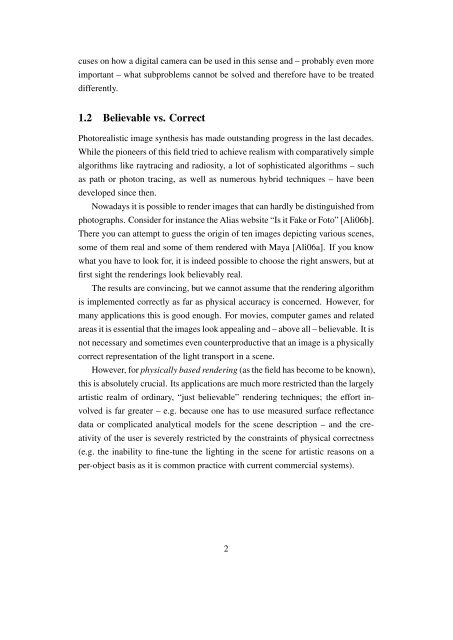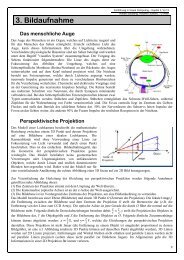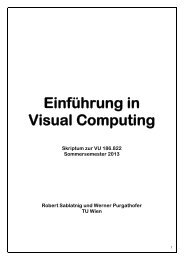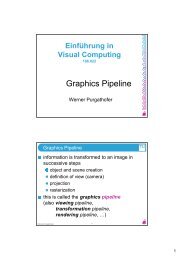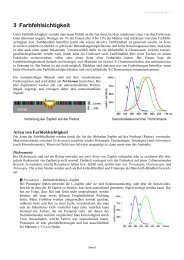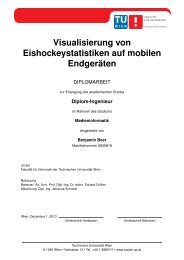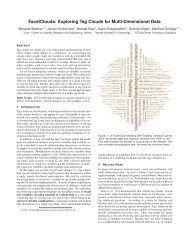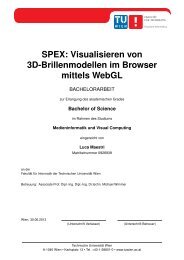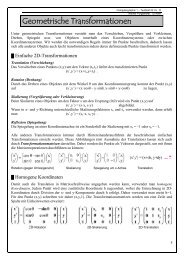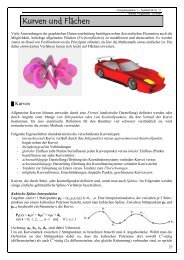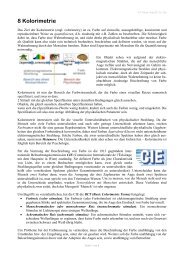Usability of Digital Cameras for Verifying Physically Based ...
Usability of Digital Cameras for Verifying Physically Based ...
Usability of Digital Cameras for Verifying Physically Based ...
Create successful ePaper yourself
Turn your PDF publications into a flip-book with our unique Google optimized e-Paper software.
cuses on how a digital camera can be used in this sense and – probably even more<br />
important – what subproblems cannot be solved and there<strong>for</strong>e have to be treated<br />
differently.<br />
1.2 Believable vs. Correct<br />
Photorealistic image synthesis has made outstanding progress in the last decades.<br />
While the pioneers <strong>of</strong> this field tried to achieve realism with comparatively simple<br />
algorithms like raytracing and radiosity, a lot <strong>of</strong> sophisticated algorithms – such<br />
as path or photon tracing, as well as numerous hybrid techniques – have been<br />
developed since then.<br />
Nowadays it is possible to render images that can hardly be distinguished from<br />
photographs. Consider <strong>for</strong> instance the Alias website “Is it Fake or Foto” [Ali06b].<br />
There you can attempt to guess the origin <strong>of</strong> ten images depicting various scenes,<br />
some <strong>of</strong> them real and some <strong>of</strong> them rendered with Maya [Ali06a]. If you know<br />
what you have to look <strong>for</strong>, it is indeed possible to choose the right answers, but at<br />
first sight the renderings look believably real.<br />
The results are convincing, but we cannot assume that the rendering algorithm<br />
is implemented correctly as far as physical accuracy is concerned. However, <strong>for</strong><br />
many applications this is good enough. For movies, computer games and related<br />
areas it is essential that the images look appealing and – above all – believable. It is<br />
not necessary and sometimes even counterproductive that an image is a physically<br />
correct representation <strong>of</strong> the light transport in a scene.<br />
However, <strong>for</strong> physically based rendering (as the field has become to be known),<br />
this is absolutely crucial. Its applications are much more restricted than the largely<br />
artistic realm <strong>of</strong> ordinary, “just believable” rendering techniques; the ef<strong>for</strong>t in-<br />
volved is far greater – e.g. because one has to use measured surface reflectance<br />
data or complicated analytical models <strong>for</strong> the scene description – and the cre-<br />
ativity <strong>of</strong> the user is severely restricted by the constraints <strong>of</strong> physical correctness<br />
(e.g. the inability to fine-tune the lighting in the scene <strong>for</strong> artistic reasons on a<br />
per-object basis as it is common practice with current commercial systems).<br />
2


